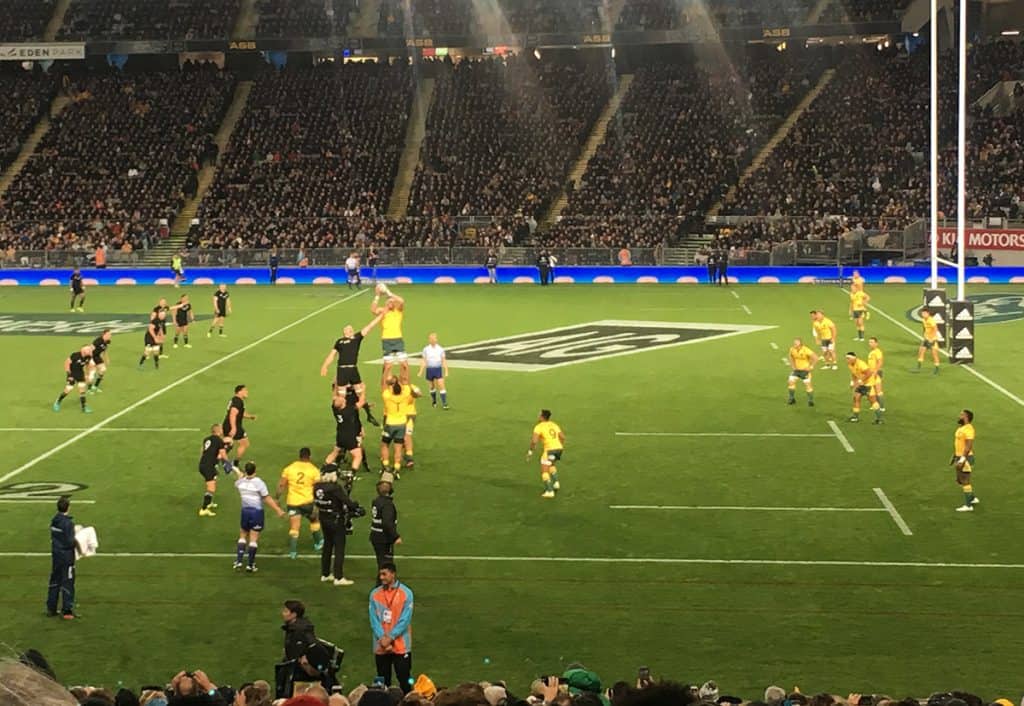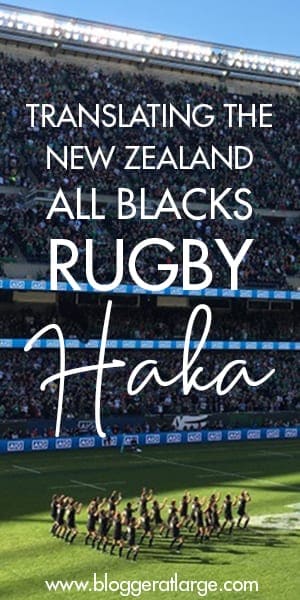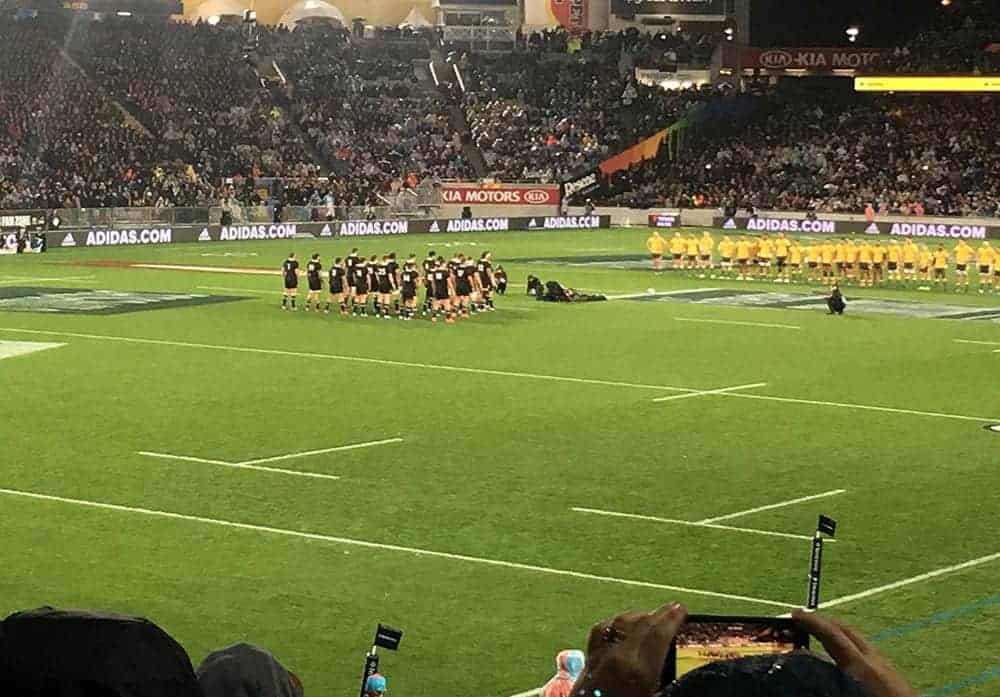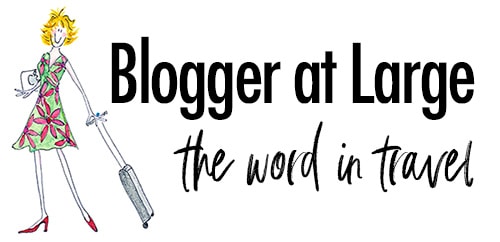The New Zealand All Blacks rugby team are like gladiators to Kiwi rugby fans down here and the haka, the Maori war dance performed the game, makes our chests swell with pride.
It’s also now become such an iconic pre-game performance, that people make sure they arrive early to the game just to see it.

But what is the haka and why do they do it?
In New Zealand little boys grow up aspiring to be All Blacks rugby players and men sit on their couches and shout at them – or the ref – during the game.
Incidentally, my mother and aunty invented a parallel game that can be played by disinterested fans who are forced to sit through a game – it’s called the Alphabet Game. You have to make up the whole alphabet using only stadium signage. FYI: J and Q are often hard to find! But I digress…
If you’ve ever switched on your TV, or been lucky enough to watch an All Blacks test live, at the start of an international game (which, incidentally, are the only games the All Blacks play as they are the national team, selected from the best players across all the regions around New Zealand) you’ll have seen the mighty All Blacks run out to take on their opponents.
After the national anthems have been sung, they group as a team in an arrow shape (a new position since 2015) and perform a fierce haka.
The Maori words to the Ka Mate (pronounced ka maati) are translated into English below so you can see what they’re chanting.
Ka Mate is, hands down, the most iconic haka in New Zealand and performed in a lot more places than just the rugby field.
It is made up of choreographed thigh slapping, chest beating and gesturing with the arms and hands, all the while their eyes are meant to roll menacingly and their tongues are poked out at various points.

Does everyone in New Zealand know the haka?
Pretty much! There’d be hardly a Kiwi male who has travelled overseas who hasn’t performed a haka somewhere! But most of us would not know what the words actually mean.
But the haka, to us New Zealanders, is a powerful show of respect.
Take it off the rugby field and when the haka is performed to honour someone important for an extraordinary achievement or to pay respects at a funeral, it’ll give a Kiwi (not to be confused with the kiwifruit!) goosebumps.

I’ll never forget seeing the dozens of kids from Hillary College performing a rousing haka as the casket of Sir Edmund Hillary was being carried out of Holy Trinity Cathedral in Auckland. It brought me to tears.
So here are the All Blacks Ka Mate haka words, for everyone who wonders what on earth is means, the Maori and English translation – and for those who want to have a go!
Ka Mate Haka Translation
| Ringa pakia! | Slap the hands against the thighs! |
| Uma tiraha! | Puff out the chest. |
| Turi whatia! | Bend the knees! |
| Hope whai ake! | Let the hip follow! |
| Waewae takahia kia kino! | Stomp the feet as hard as you can! |
| Ka mate, ka mate | ‘I die, I die, |
| Ka ora’ Ka ora’ | ‘I live, ‘I live, |
| Ka mate, ka mate | ‘I die, ‘I die |
| Ka ora Ka ora “ | ‘I live, ‘I live, |
| Tēnei te tangata pūhuruhuru | This is the fierce, powerful man (some versions say ‘the hairy man’) |
| Nāna i tiki mai whakawhiti te rā | …Who caused the sun to shine again for me |
| Upane… Upane | Up the ladder, Up the ladder |
| Upane Kaupane” | Up to the top |
| Whiti te rā,! | The sun shines! |
| Hī! | Rise! |
In 2005 a new haka was written specifically for the All Blacks, called Kapa o Pango.
They don’t perform this one very often, only on really special occasions, but if you want to read that translation and watch the spine tingling performance, read my post here on the meaning of Kapa o Pango >>
And if you REALLY love the haka, read my post on how to download a free haka ringtone >>
If you want to know more about the mighty All Blacks, their fixtures or even where to get their gear, click here to AllBlacks.com

marty
Monday 29th of July 2019
There seems to be a difference with regard what was behind Te Rauparaha's motivation emotion for the Ka Mate haka according to the account in Te Ara national encyclopedia as well as the translation you give.According to the account in Te Ara the haka was written after avoiding a war party toa hunting him in order to kill him in an Utu avenging.He skulked in a kumara pit which atop sat one of his extended whanau female relatives.If you know anything about tikanga not only was the hiding against tikanga so was being beneath female genitalia,that is why he escaped because he knew the toa would not look in the pit.He composed the haka in 'gratitude for escaping death and seeing the sun again.He also was the one who changed the way tikanga warfare was changed forever.Chivalry in war gone forever and ordinary lifestyle practices also.
Megan
Monday 29th of July 2019
Thanks for taking the time to comment Marty. It's such a fascinating part of our history.